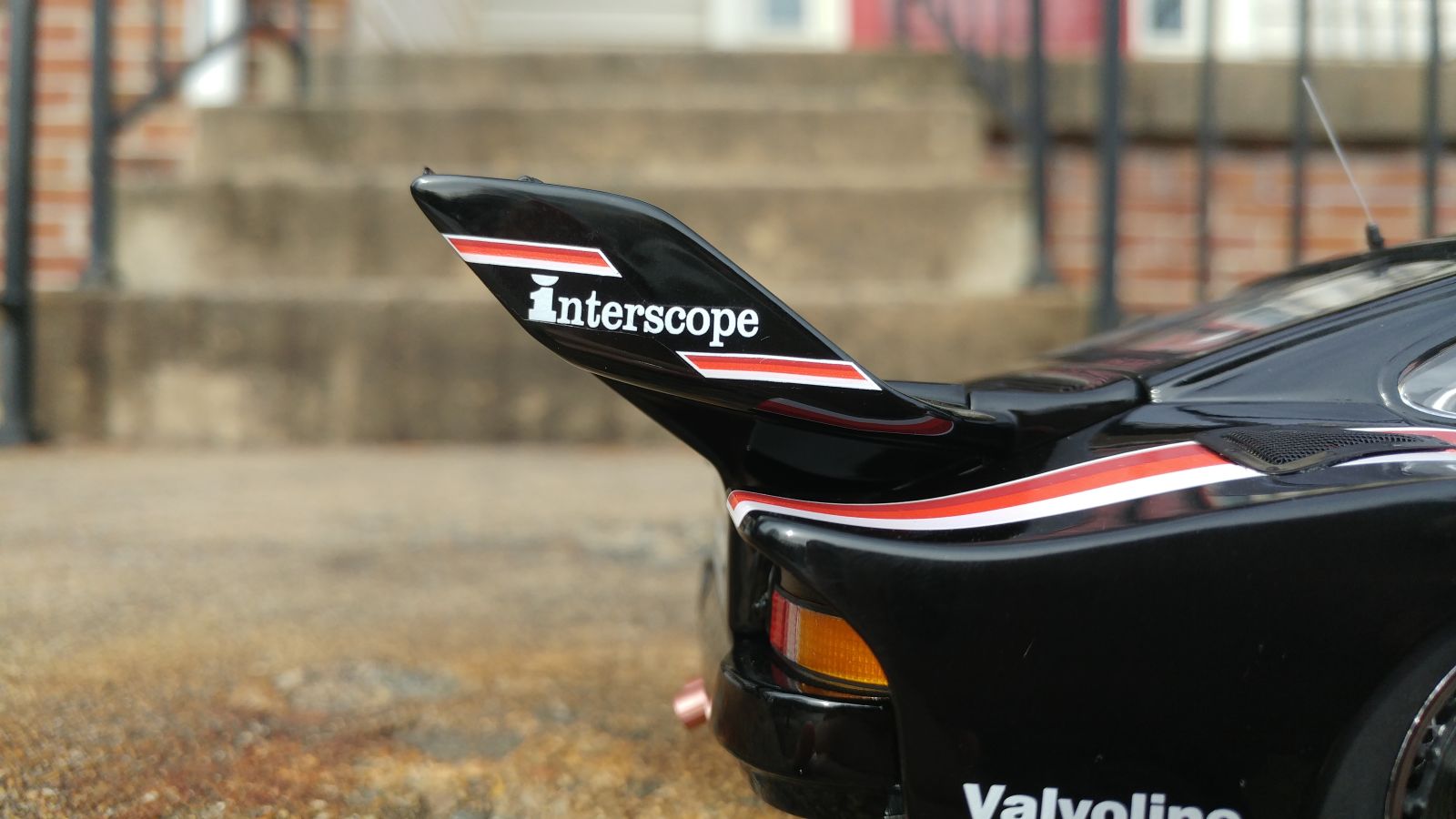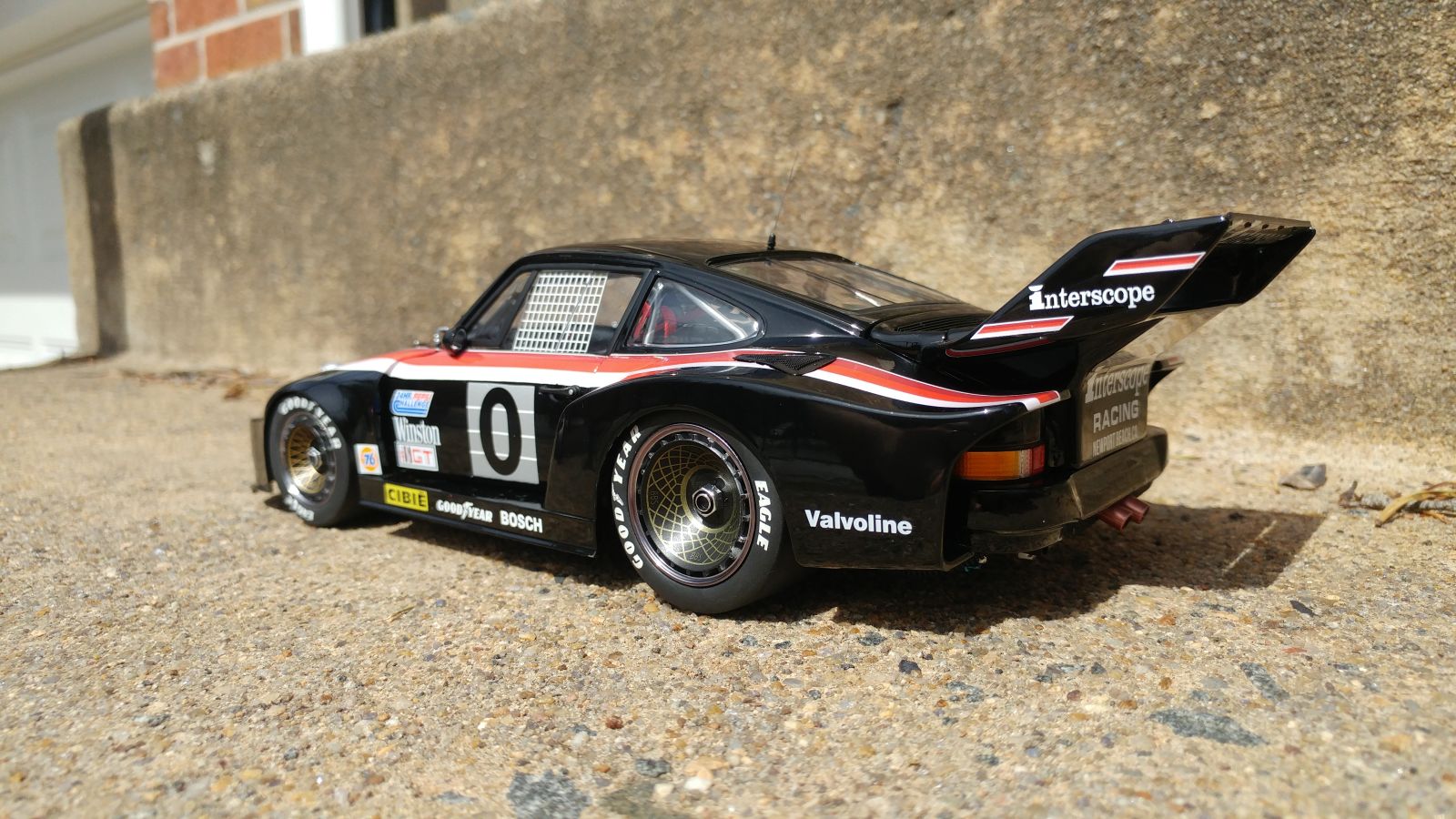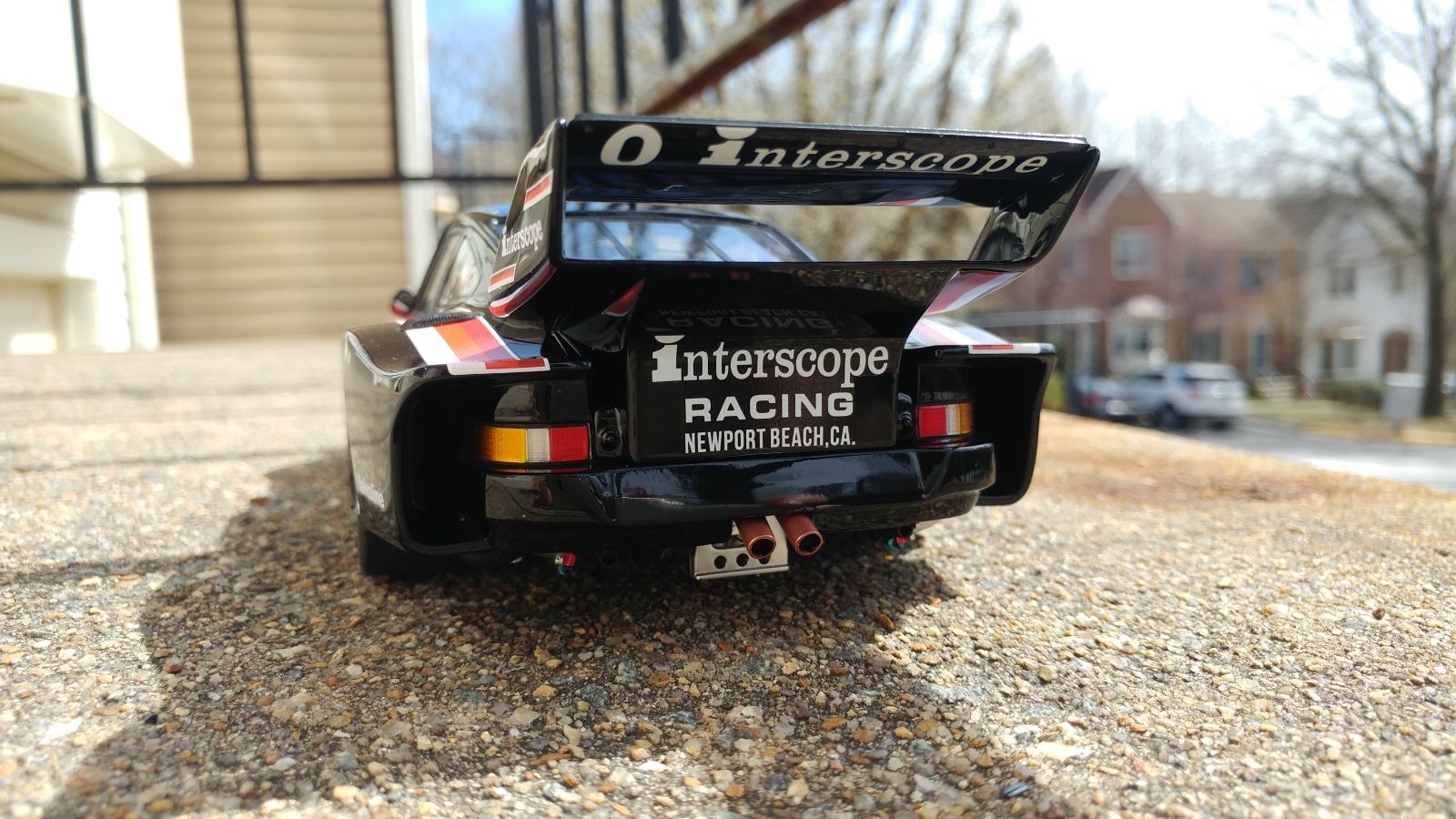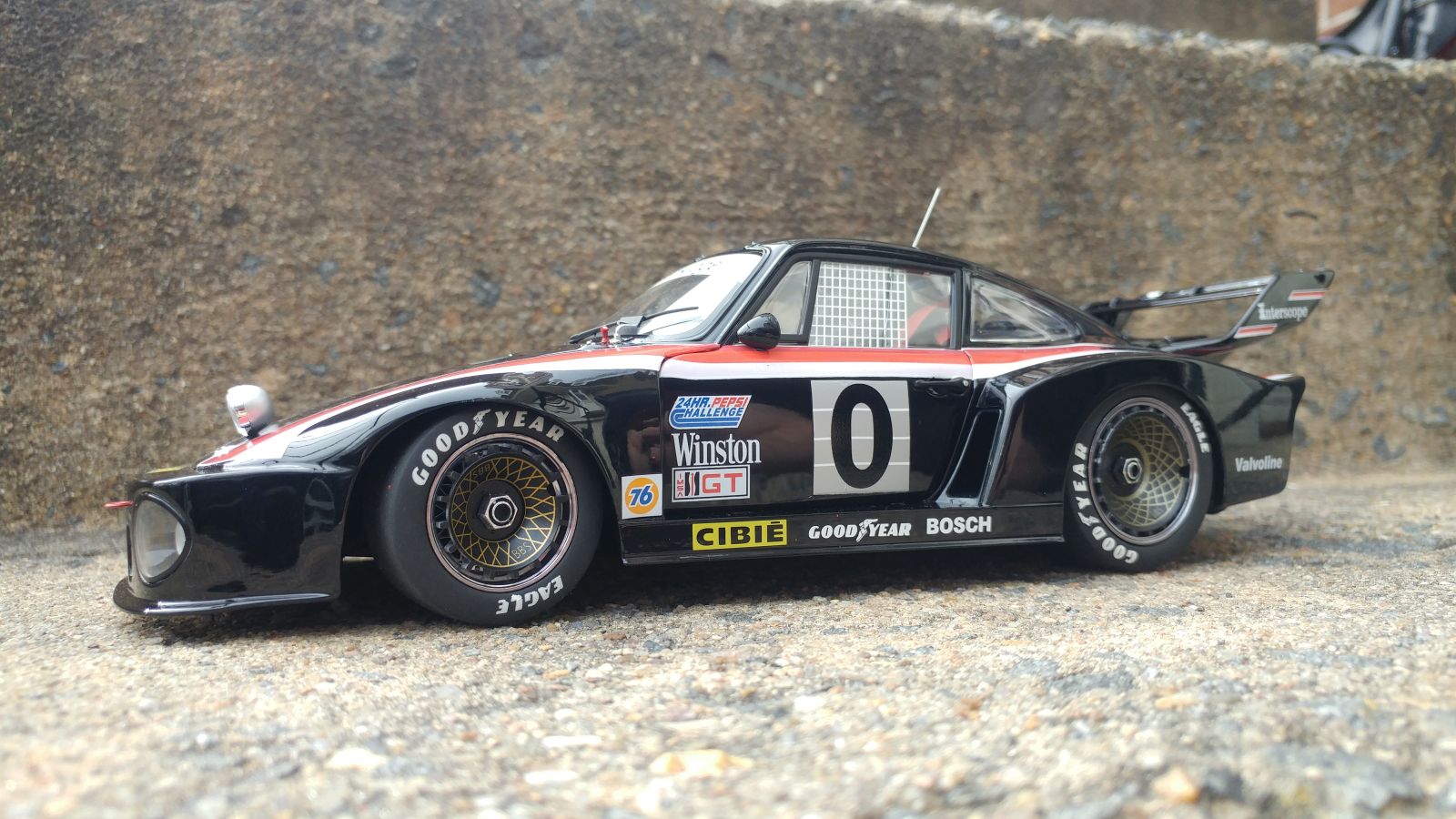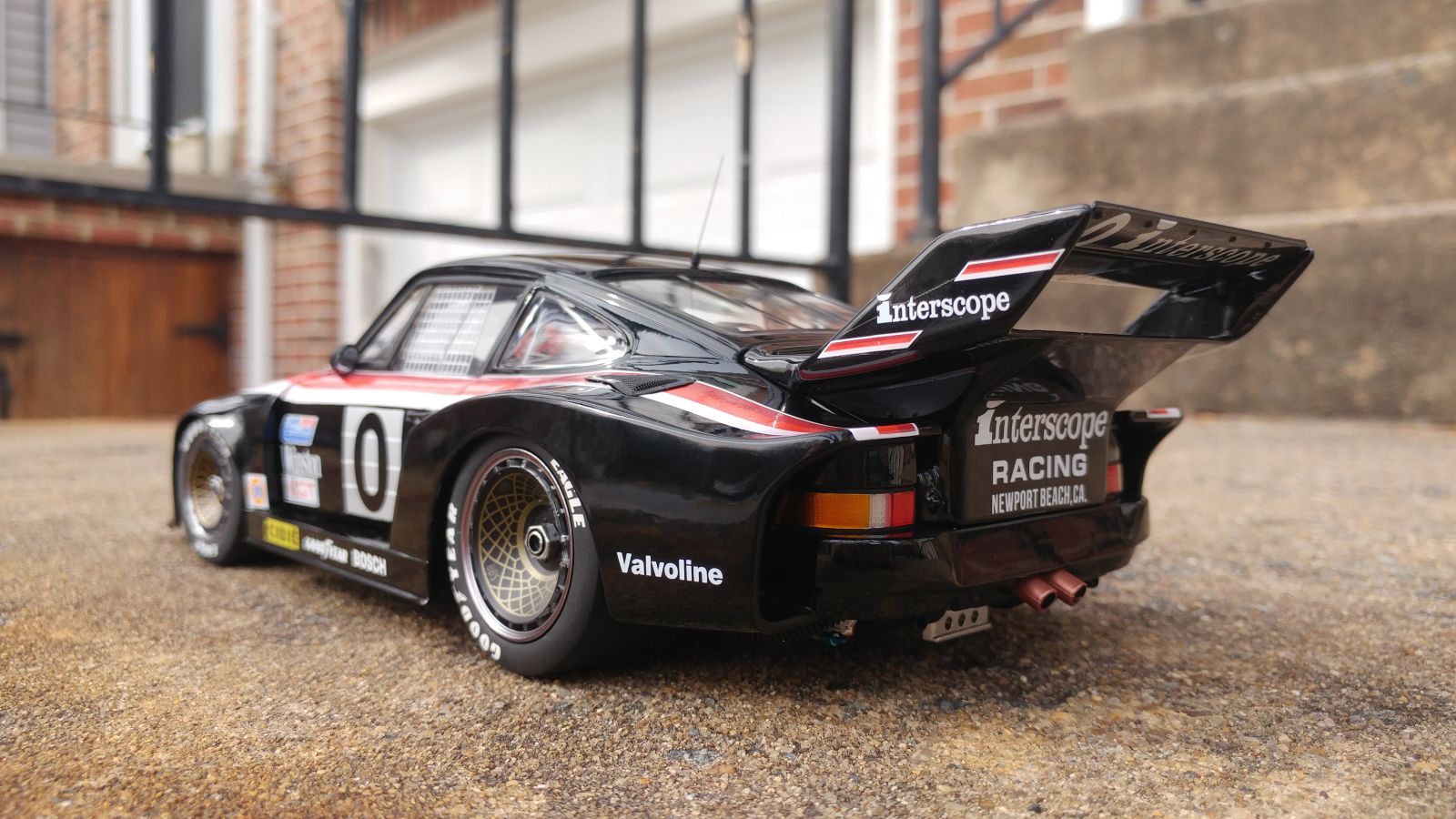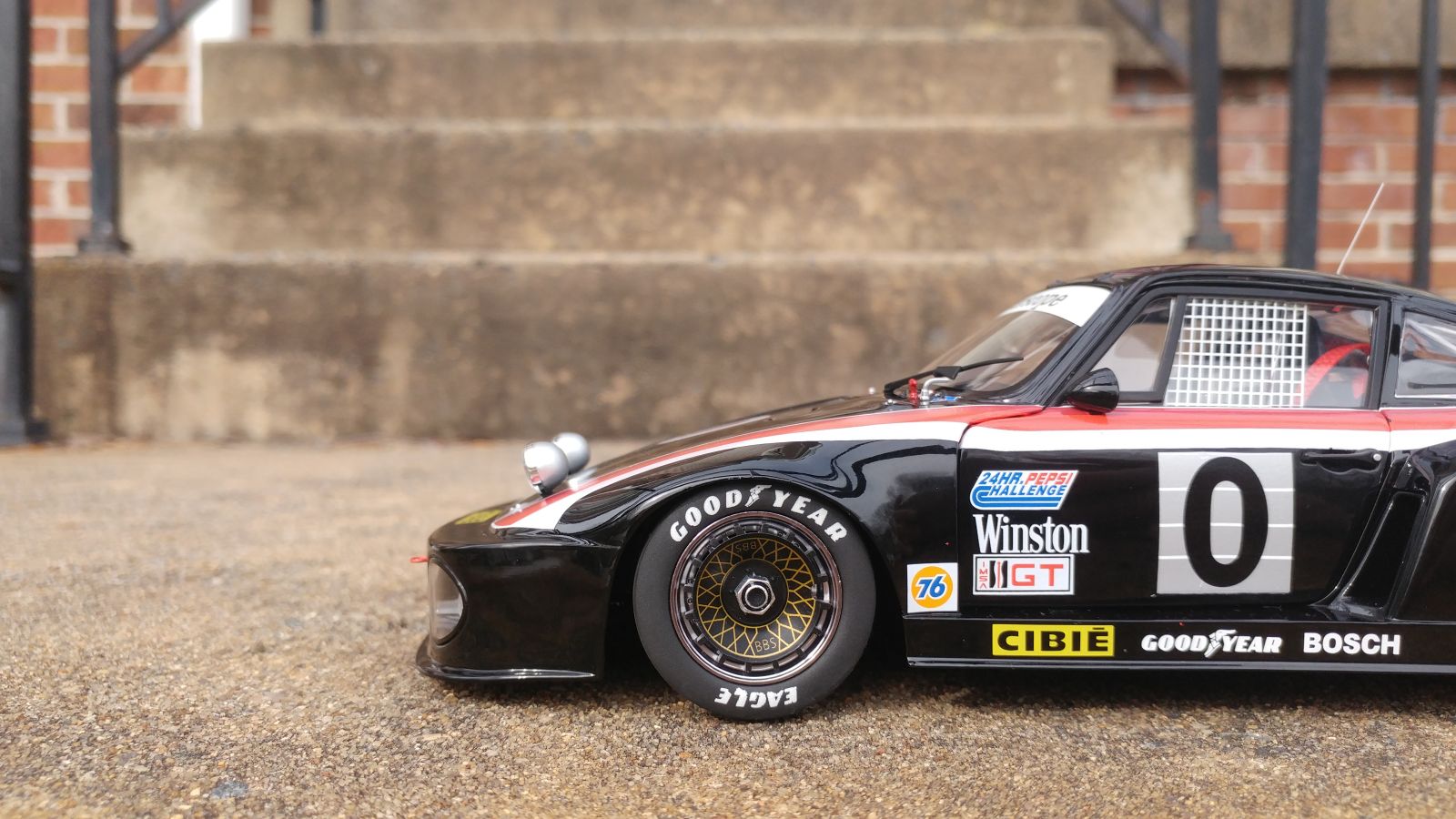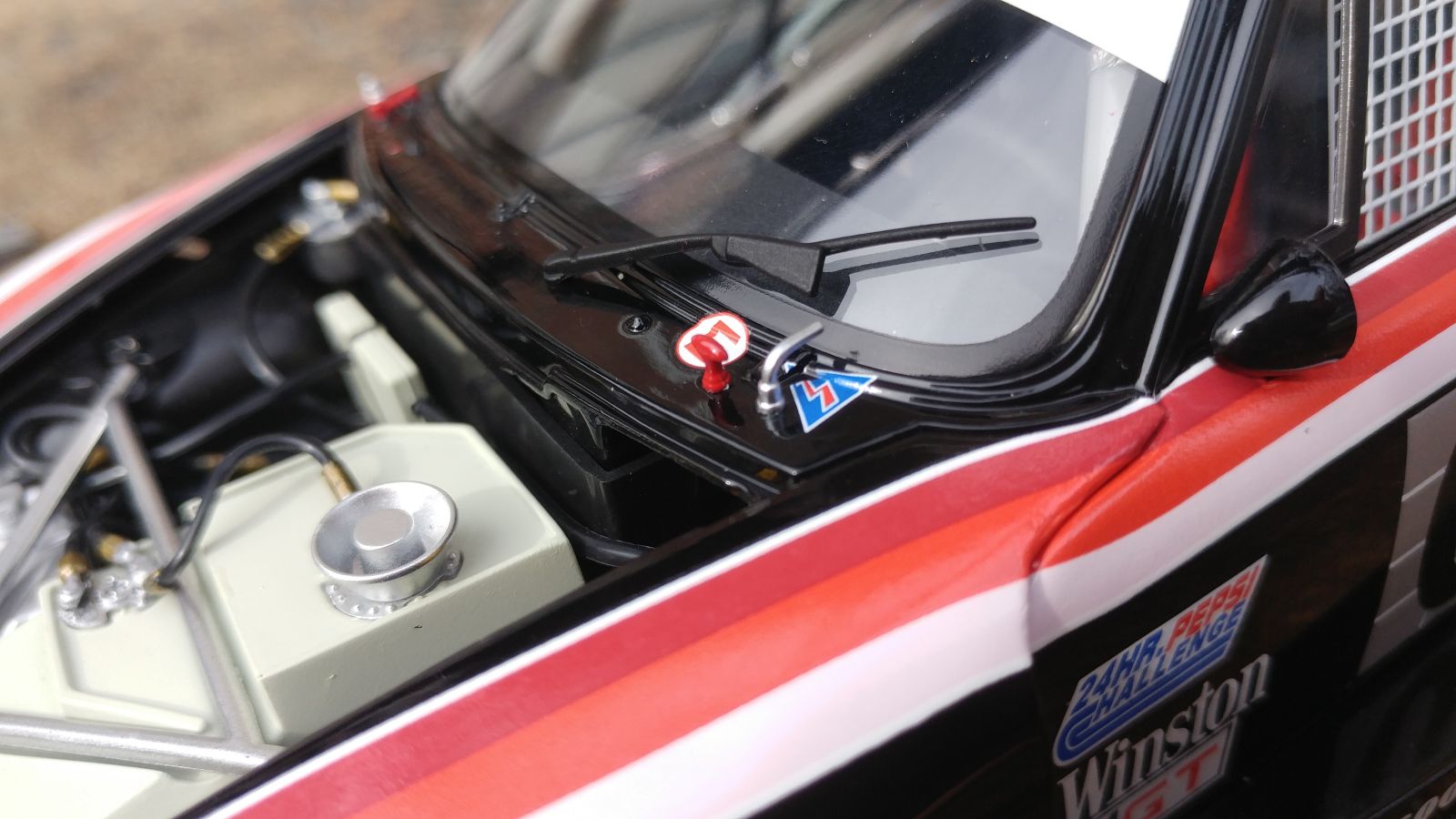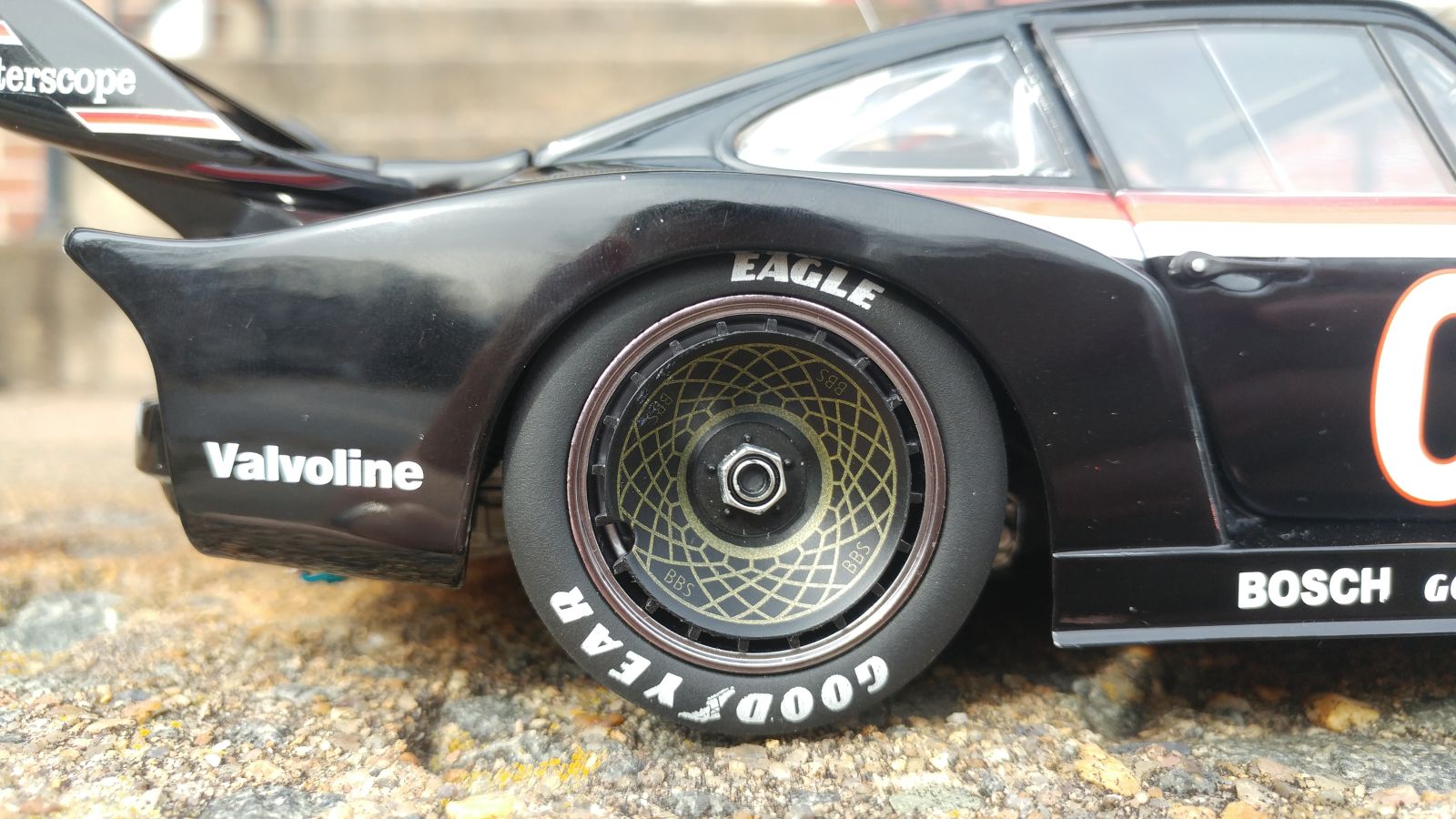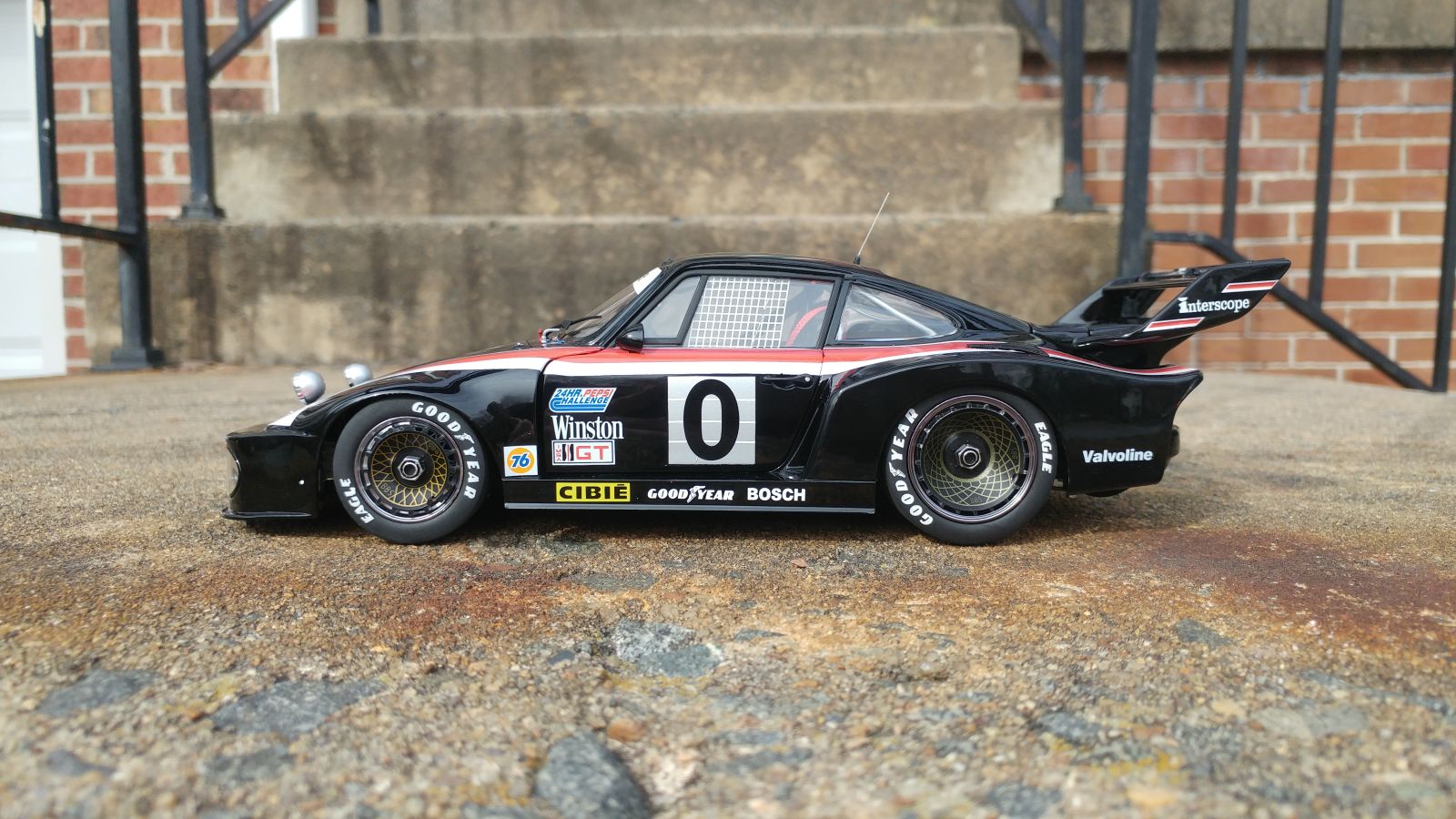
When I showed it last week during Car Week I didn’t have much time to write proper words to accompany this awesome car or take the photos it deserves. But what better day to try to make up for that than Teutonic Tuesday?
I mentioned in my 911 Carrera RSR Turbo 2.1 post that the successors to that car were racing versions of the new generation 911 Turbo, the 930. Since these cars would be competing in Group 4, 5, and 6, Porsche named them 934, 935, and 936, respectively.
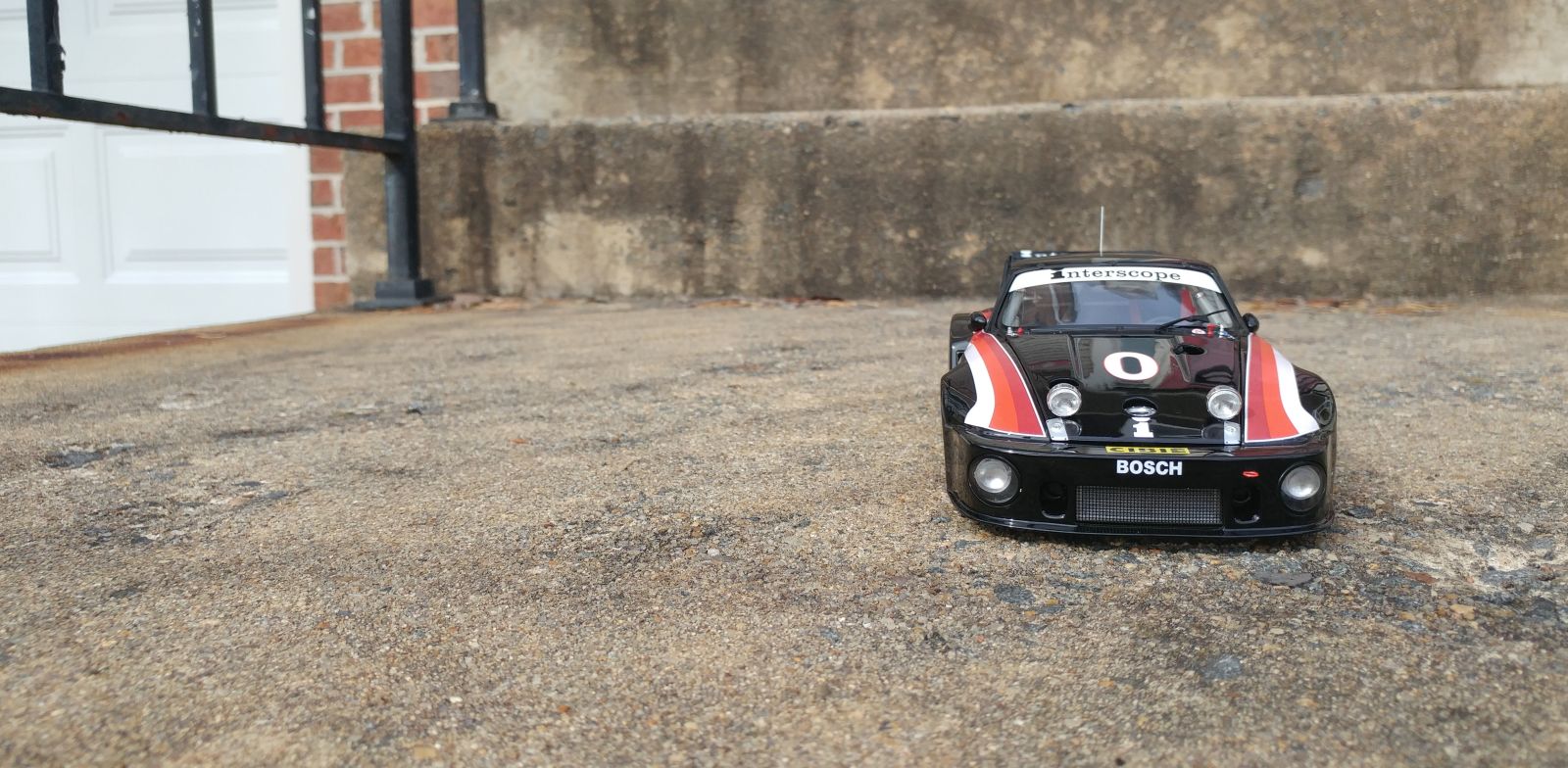
To fit below the 4L displacement rule, using the 1.4 equivalency factor, the road car’s 3L engine turned into a 2857 cc engine on the 935. The engine plus the giant KKK turbo were good for 590 - 630hp. The first 935s in 1976 looked a lot like the RSR Turbo in that they had a “normal” 911 nose and a huge wing. When this turned out to be quite a drag on performance, this nose was replaced with the famous flat one.
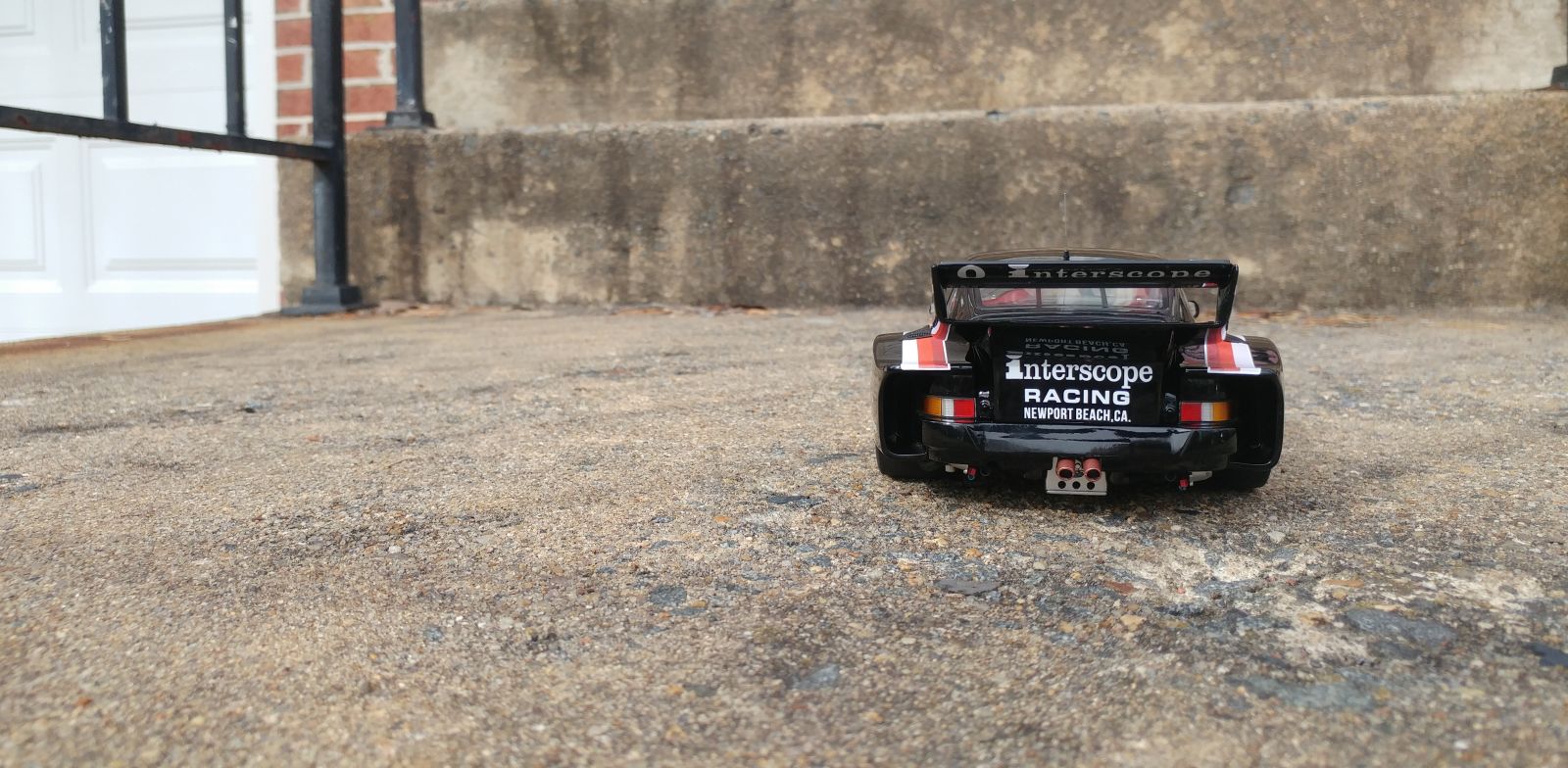
For the 1977 season Porsche took the GIllette approach and decided that more was indeed better, so they replaced the large turbo with two smaller ones in order to reduce turbo lag, which I’m sure the drivers very much appreciated. Added bonus was the increase in output to 680 horses.
In 1978 the 935 was so successful in the hands of privateers that its only competition turned out to be other 935s, namely the infamous Moby Dick works cars. 935s won all 8 rounds of the World Championship for Makes and 12 of 14 IMSA races. This, of course, had the predictable effect of pissing off IMSA, which then for the 1979 season said, “You think you’re all that and a bag of chips, right? Well, how about we make that bag of chips weigh 40kgs for twin-turbo cars?”
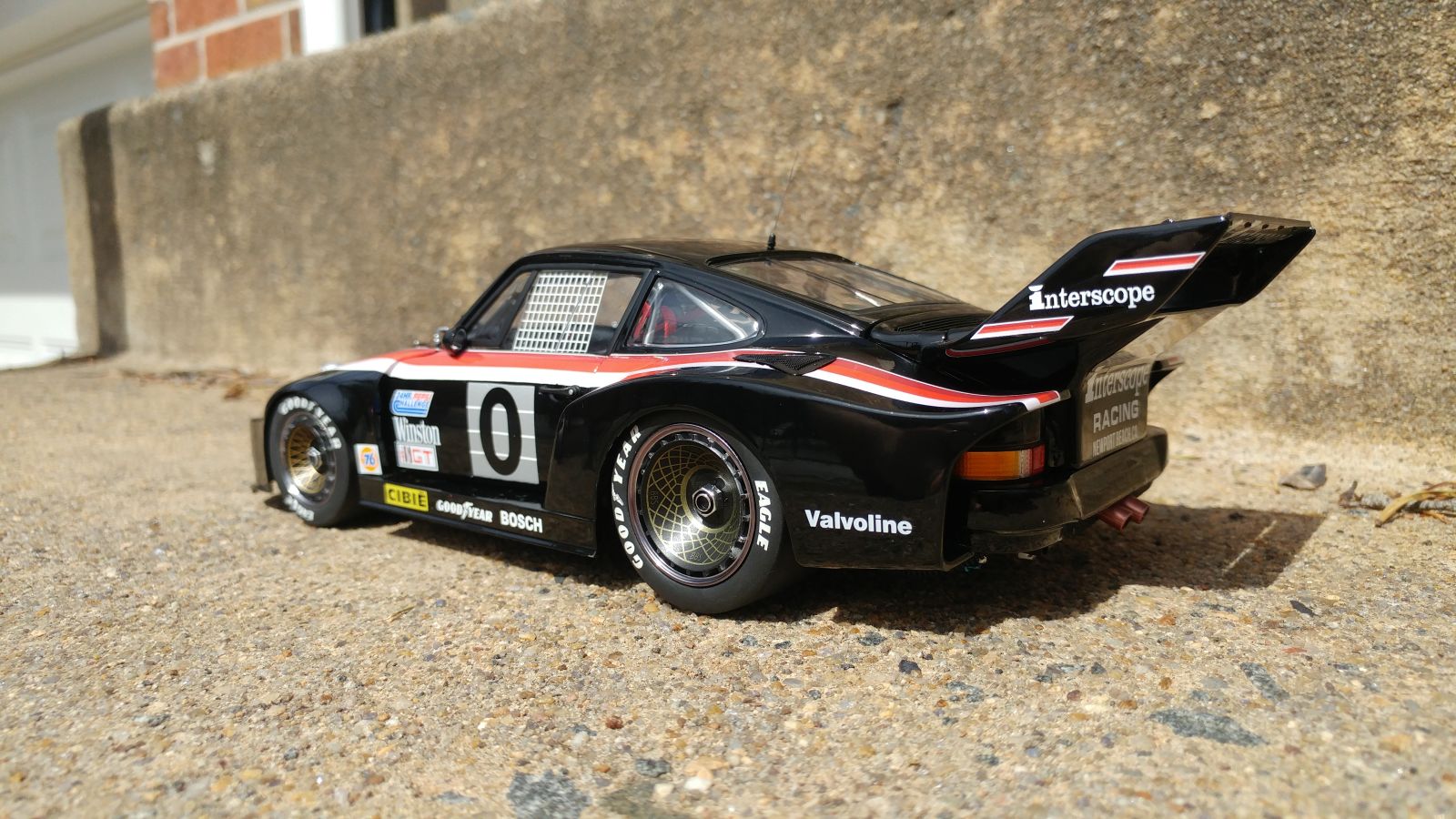
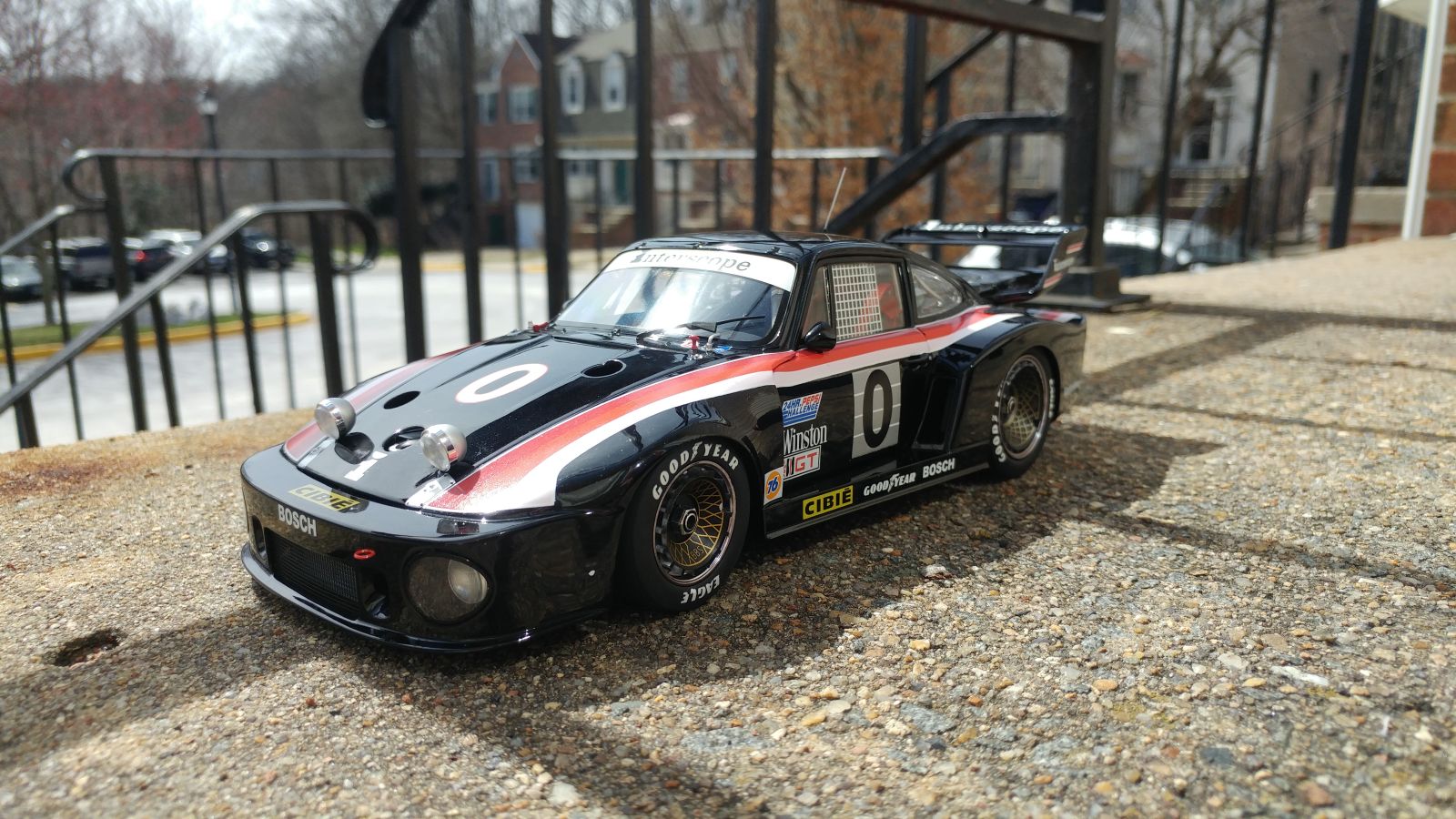
Porsche will of course be Porsche, and the ever-pragmatic engineers just got rid of one of the two turbos, enlarged the displacement to 3.2L, and these final 7 factory-built 935s still managed 680 horsepower. And a win at the 1979 Daytona 24 Hours in this very car.
Despite IMSA’s ballast rule, ten twin-turbo 935s started alongside three single-turbo cars, and the top-10 starters were 935, 935, 935, 935, 935, 935, 935, 935, 935, Ford Cobra II. As the famous Porsche ad from after the 83 Le Mans 24 Hours says, “nobody’s perfect.” The #0 of Ted Field, Danny Ongais, and Hurley Haywood (#930 990 0029) would start 8th on the grid.
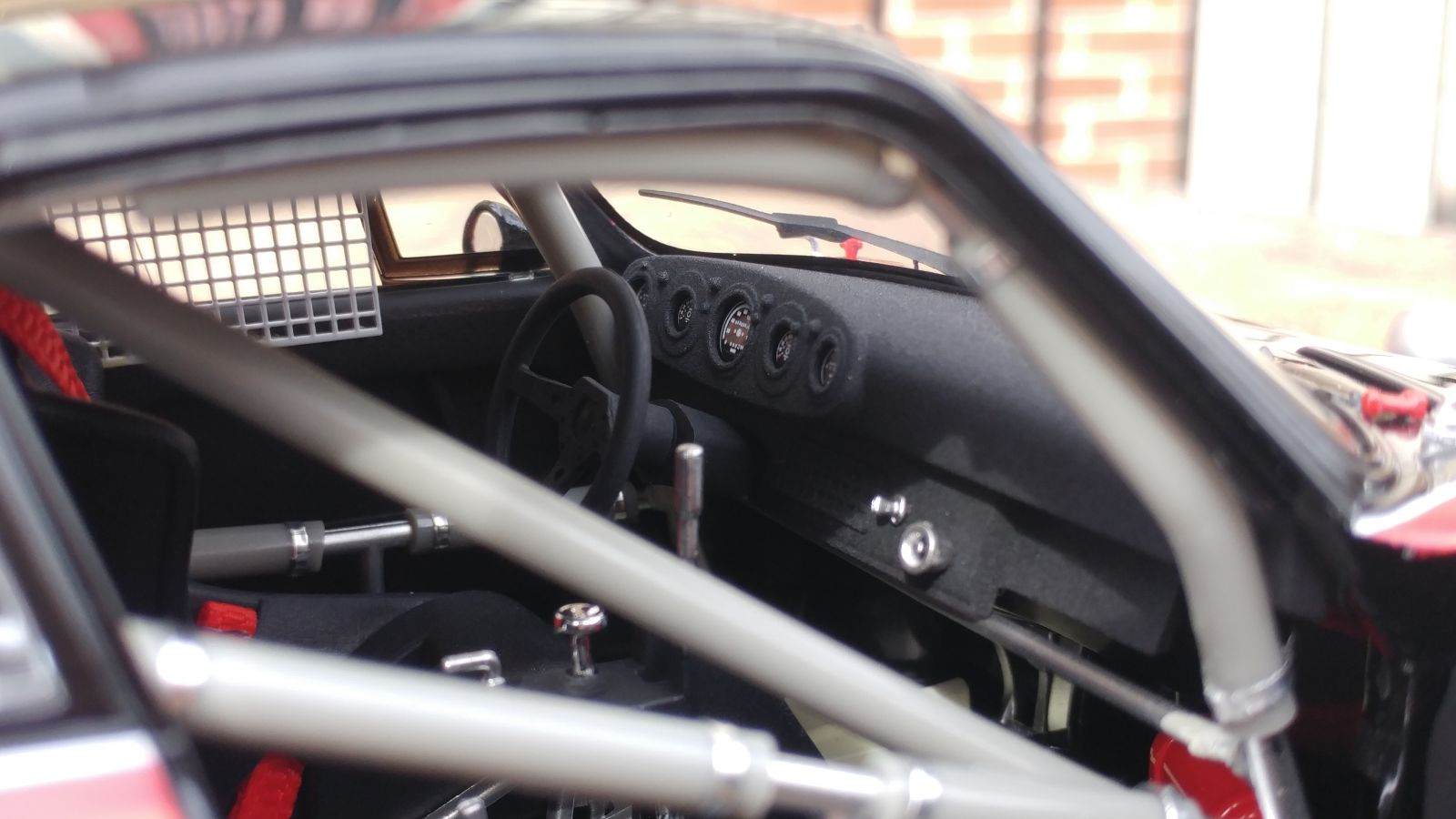
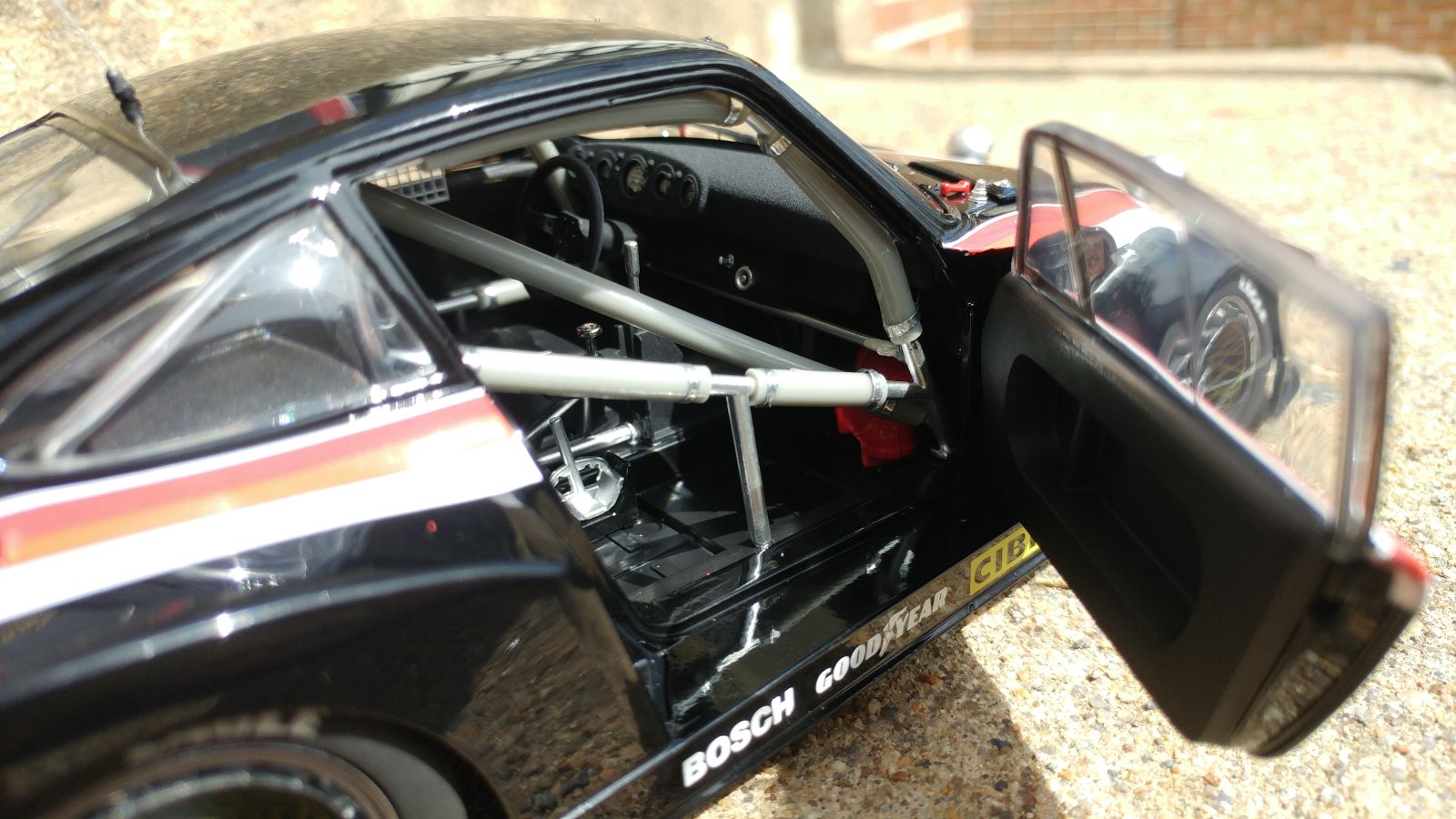
After two hours Rolf Stommelen would lead the race, and while many teams in the top-8 had to pit with turbo issues or even an engine swap as was the case for Manfred Schurti, Ted Field in the #0 did not have any issues and everything was going according to plan.
Six eventful hours into the race, the Georg Loos cars had endured several turbo swaps, Rolf Stommelen retired due to engine failure, and an accident on the banking involving a Ferrari 512BB lead to the withdrawal of all 512BBs to spare them the same possible fate, as it was thought that the tires were not up to the task of handling the banking’s excessive pressure. The #0, meanwhile, was now in the lead, with the Brian Redman/Dick Barbour/Paul Newman 935 one lap behind.
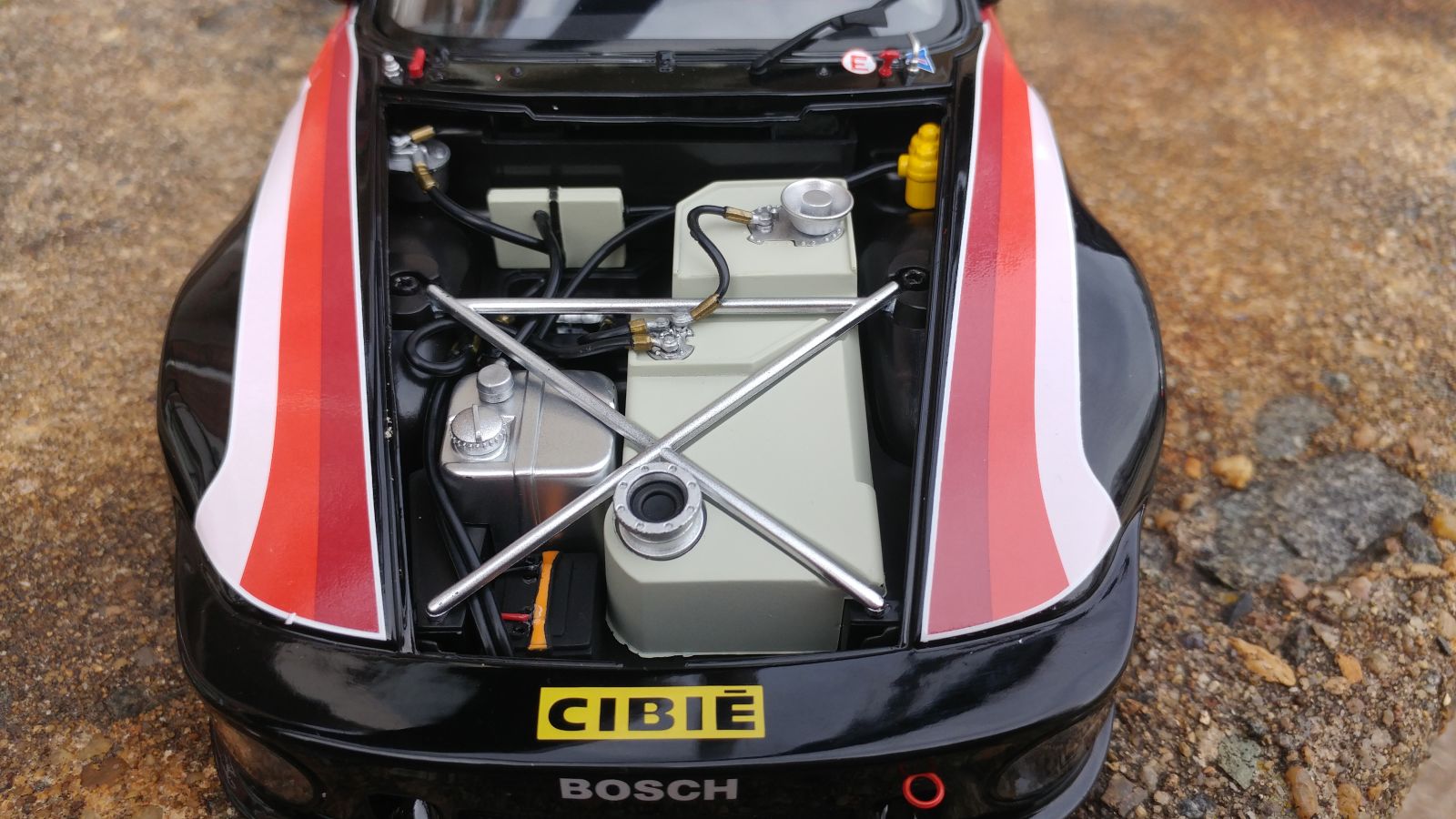
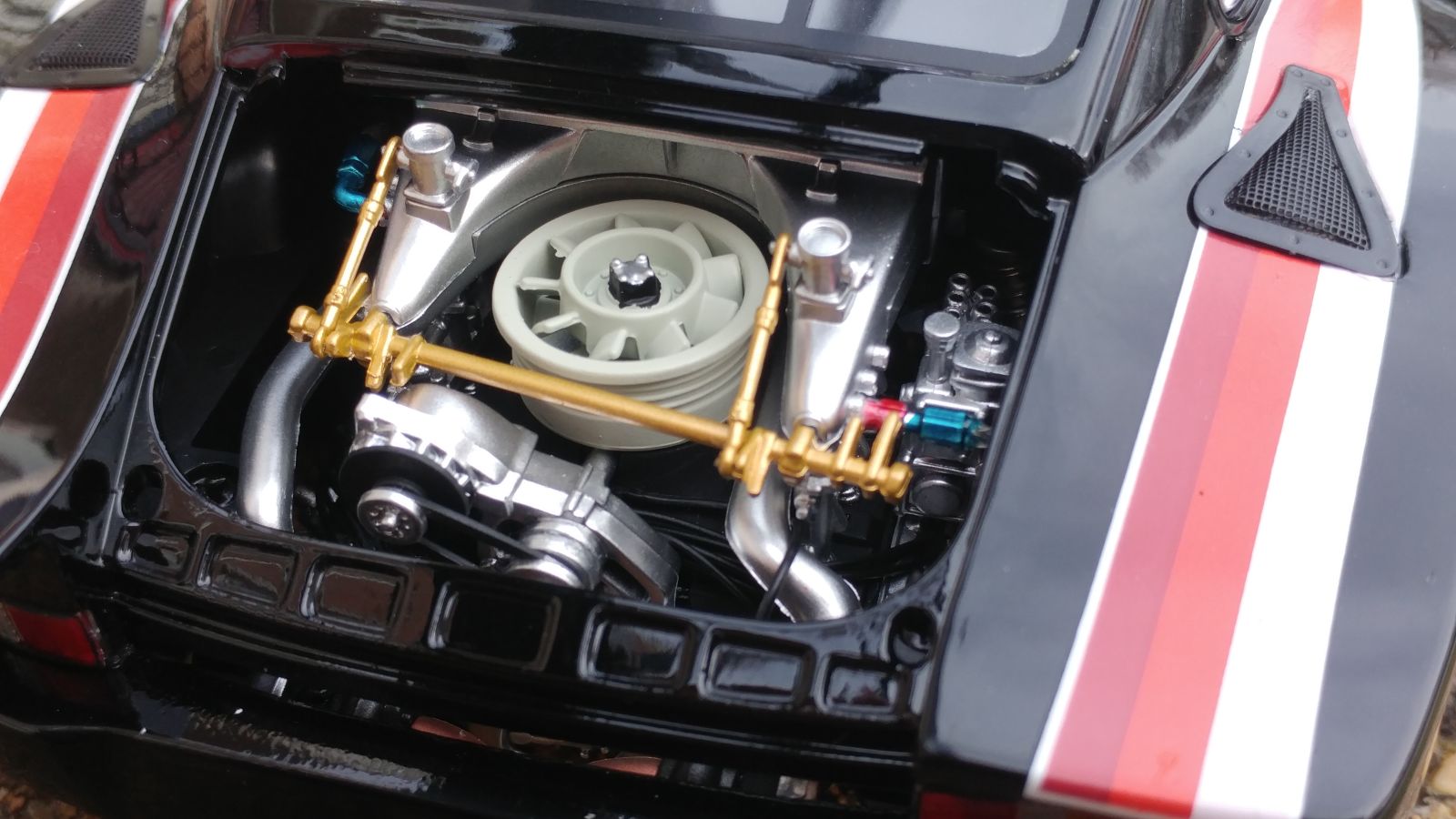
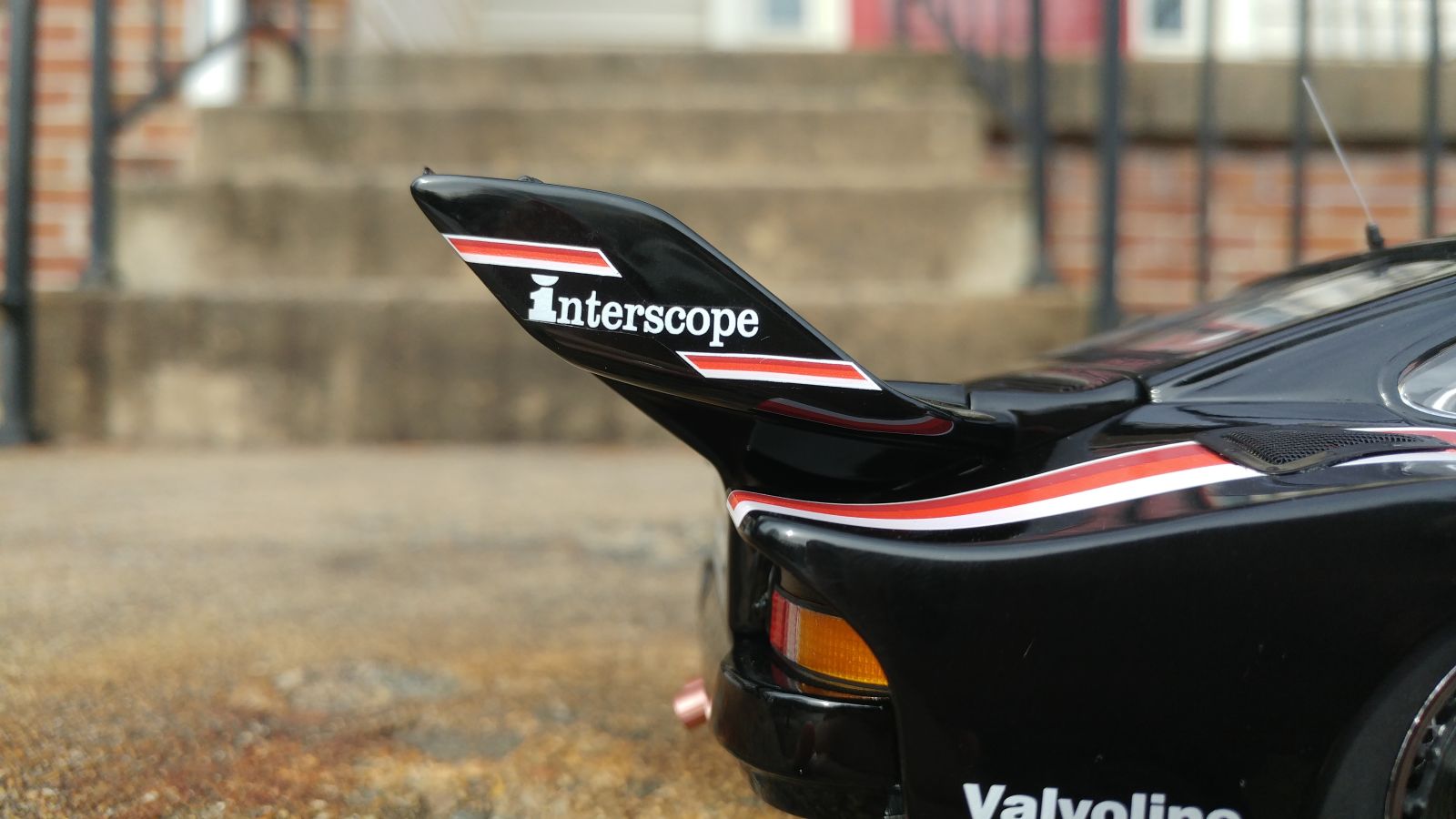
Until the next morning these two cars would trade the lead several times, but unfortunately the Dick Barbour car’s engine decided it had enough and exploded all over the place, leaving the #0 with a huge lead. The 935s dropped like flies, leaving the Ferrari 365GTB4 driven by John Morton in P2, followed by Mazda RX7s in P3 and P4. The next 935 down was the Bruce Canepa car in fifth.
Near the end of the race (as in - ten minutes before the end) the #0's turbocharger gave out and the car stopped near the finish line. When the 24 hours were up (literally as soon as they were up; they finished in 24h 0m 24.870s), the car was pushed over the finish line and still managed to win by a 49 (!!!!!) lap margin. I believe this episide is what led to the rule change that dictated a car had to cross the finish line under its own power in order to win. But either way the Ted Field/Danny Ongais/Hurley Haywood car outlasted all of the competition to take the cup.
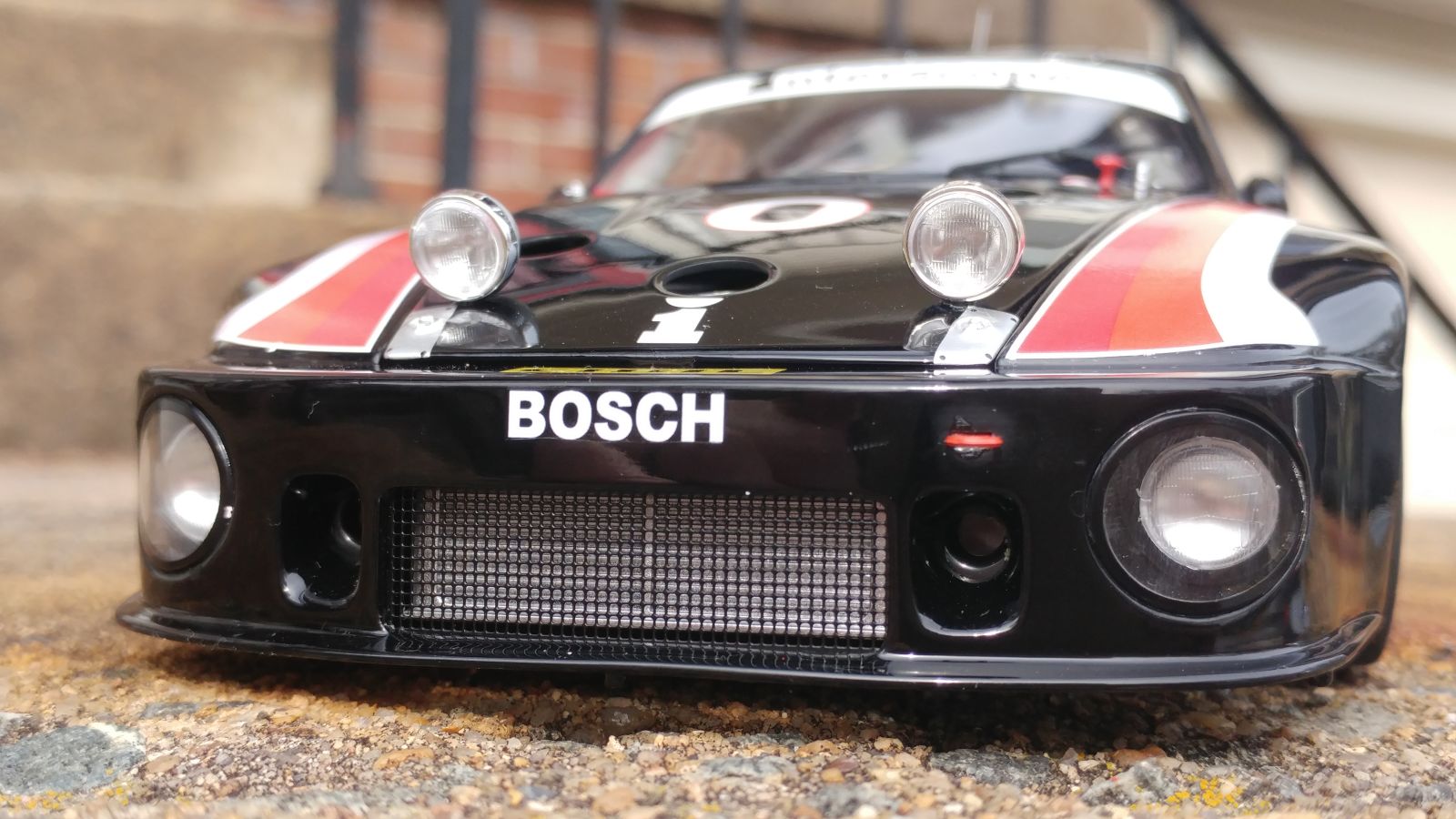
The model, as you all know by now, is a 1:18 by TSM, a brand which I have already professed my love for. Their 1:43s are epic, and their diecast 1:18s are magnificent. I hear the same thing about their resin 1:18s but I have no personal experience with resin 1:18s, be it TSM or any other brand. Everything on this model looks spot-on. The interior has a padded roll cage, beautiful gauges and switches, plus a fire extinguisher. The frunk contains the fuel cells, battery, and the electrical cutoff switch is present and accounted for.
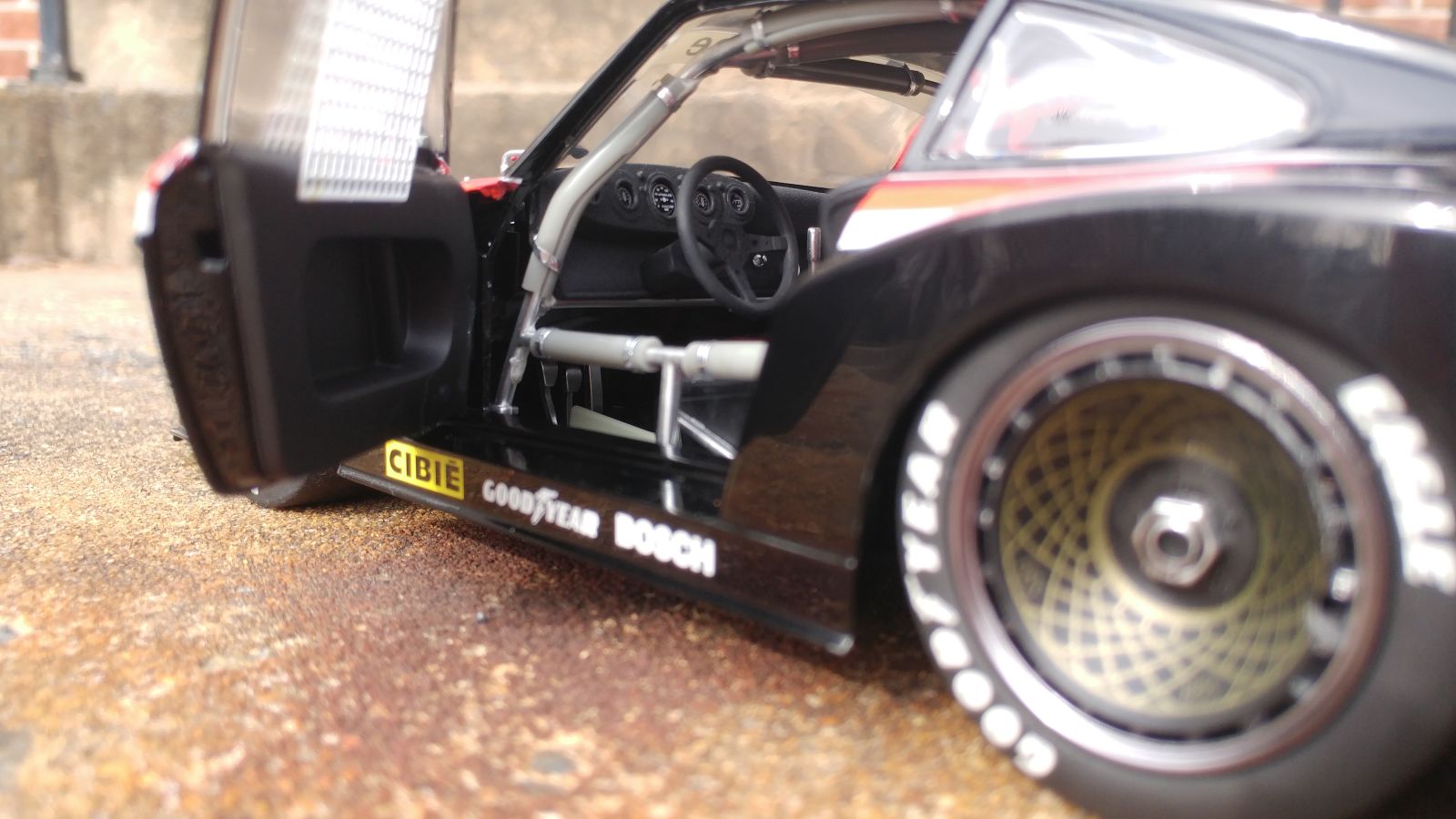
Around back, however, there is an interesting issue. The engine has incredible detail with hoses and wires in all the right places, intakes, exhausts, all beautifully represented. Here is where it gets problematic. The astute reader will have noticed that the #0 was one of three cars entered in the Daytona 24 Hours (and 1 of 7 built by Porsche in 1979) that had the single-turbo 3.2L engine to avoid the IMSA sandbagging rule. However, on this model I can definitely count two turbos.
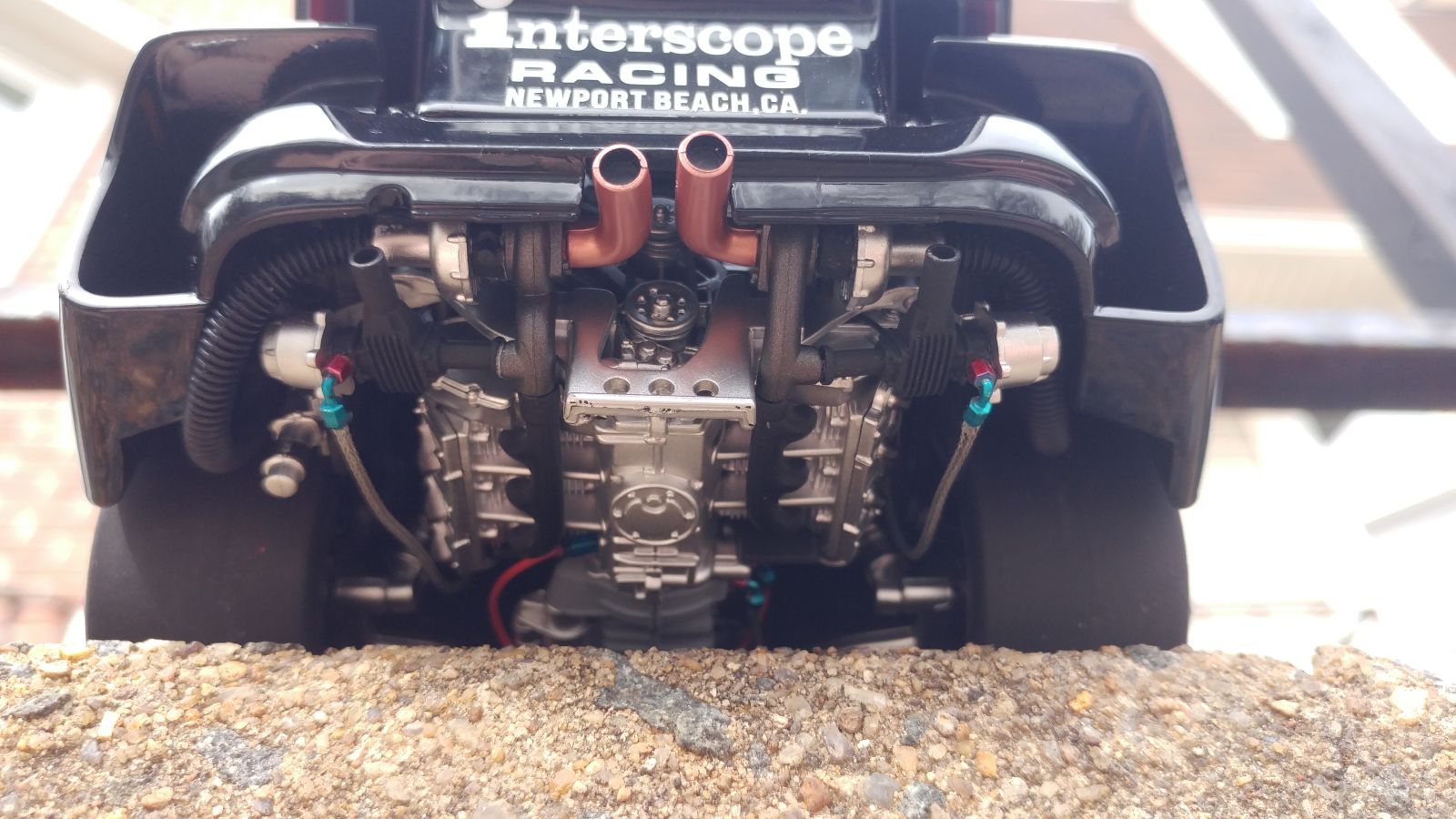
I am a little disappointed in TSM for not making an accurate engine for this car. Yes, it was only one of seven, but it’s still a higher-end model, and I would expect something like this to be one of the details they got right. Either they took the lazy way out and put the same engine in this car as in their 935 K3/80 models (it matches my Gozzy Kremer K3 perfectly), hoping people wouldn’t catch it, or their research department didn’t know that this car had a different engine.

Either way, I still love this model and it sits prominently on my desk right now. Shout-out to CitizenPatrick and the Model Citizen Diecast family for helping me once again find the perfect birthday 1:18. Now the quest for 2019's birthday 1:18 starts! Suggestions are welcome. :D
As Magnus Walker would say, “cheeRS.”
